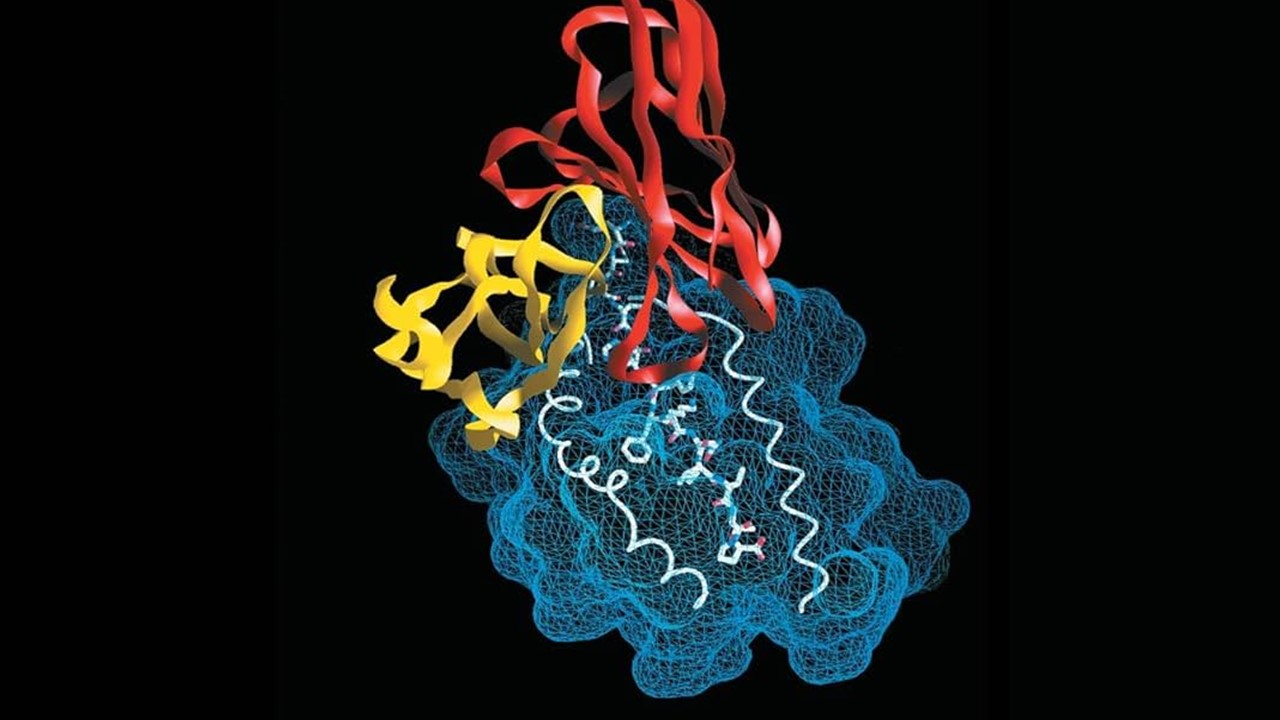In drug discovery, the adenine scaffold stands as a beacon of innovation as it offers a gateway to novel therapeutics targeting a diverse array of diseases. From cancer to infectious diseases, researchers are harnessing the power of adenine analogs to develop potent inhibitors and agonists that modulate crucial cellular pathways. Let’s delve into the depths of this molecular scaffold and explore its role in the development of cutting-edge treatments.
The Adenine Molecule
The adenine molecule, nestled within the purine ring system, stands as a cornerstone of biological processes, orchestrating vital functions within the cellular realm. Its significance spans from being a fundamental nucleobase in genetic material to serving as a reservoir of cellular energy in the form of Adenosine TriPhosphate (ATP). Moreover, adenine manifests its versatility by contributing to the structures of vital cofactors such as S-Adenosyl-L-Methionine (SAM), Nicotinamide Adenine Dinucleotide (NAD), and playing a pivotal role in various metabolic pathways.
SAM/SAH Analogs to Target SAM-Dependent Methyltransferases
SAM is a ubiquitous cofactor that acts as a methyl donor for SAM-dependent MethylTransferases (MTases), driving essential biological processes such as epigenetic regulation and protein function modulation. SAM’s reactivity stems from its sulfonium group, facilitating methyl group transfers to diverse substrates. These MTases encompass a wide array of enzymes, including Histone MethylTransferases (HMTs), DNA MethylTransferases (DNMTs), and others, each with distinct substrate preferences and biological implications.
S-Adenosyl-L-Homocysteine (SAH) is a byproduct of S-Adenosyl-L-Methionine (SAM) methylation reactions, formed when SAM donates its methyl group and acts as a potent inhibitor of methyltransferase enzymes by competing with SAM for their active sites.
HMT Inhibitors: Antitumorigenics
HMTs emerge as pivotal regulators of gene expression through histone methylation. Targeting these enzymes holds promise for therapeutic intervention in various diseases, particularly cancers. Leveraging the adenine scaffold, inhibitors such as EPZ-5676 exhibit potent and selective activity against DOT1L, a critical player in acute leukemia. Furthermore, compounds like JNJ-64619178 demonstrate efficacy in inhibiting PRMT5, presenting a potential avenue for treating advanced solid tumors.
DNMT Inhibitors: Combatants of Aberrations
Aberrant DNA methylation patterns orchestrated by DNMTs underpin the pathogenesis of numerous diseases, notably cancers. Inhibitors like Azacitidine and Decitabine have garnered FDA approval for their efficacy in combating these aberrations. Novel reversible DNMT1-selective inhibitors, exemplified by GSK-3484862, offer promising avenues for precise epigenetic modulation, heralding a new era in targeted therapeutics.
NTMT Inhibitors: Modifiers of Cell Signaling
Protein N-Terminal MethylTransferases (NTMTs) play crucial roles in cellular processes, making them attractive targets for therapeutic intervention. Bisubstrate inhibitors, such as NAM-C3-PPKRIA, exhibit potent activity against NTMT1, paving the way for unraveling the intricacies of N-α-methylation in disease contexts.
NNMT Inhibitors: Detoxifiers
Nicotinamide N-MethylTransferase (NNMT), pivotal in cellular detoxification and metabolism, emerges as a potential target in various diseases, including cancers and neurodegenerative disorders. Bisubstrate compounds like 11 and 12 demonstrate potent inhibitory activity against NNMT, offering avenues for therapeutic intervention and further exploration of NNMT’s multifaceted roles.
COMT Inhibitors: Antiparkinsonians
Catechol O-MethylTransferases (COMT) regulate catecholamine metabolism, making them attractive targets for diseases such as Parkinson’s disease. Bisubstrate inhibitors like compound 16 exhibit potent inhibition of COMT activity, promising improved treatments for Parkinson’s disease through enhanced pharmacokinetic properties.
Kinase Inhibitors: A Revolution in Cancer Therapy
Protein kinases, the molecular orchestrators of cellular signaling, have emerged as prime targets for anticancer therapies. These enzymes, which catalyze the transfer of phosphate groups to proteins, play pivotal roles in regulating cell proliferation, survival, and apoptosis. With over 538 kinases identified in the human genome, their dysregulation is implicated in various diseases, particularly cancer.
Kinase inhibitors, a class of drugs designed to block kinase activity, have revolutionized cancer therapy. By targeting specific kinases involved in tumor growth and progression, these inhibitors offer tailored treatment options with fewer systemic side effects compared to traditional chemotherapy.
Adenine Analog Kinase Inhibitors: A Multifaceted Approach
One of the most prominent strategies in kinase inhibitor design involves mimicking the structure of adenosine triphosphate (ATP), the primary energy currency of the cell. ATP-competitive inhibitors, known as Type I inhibitors, bind to the active site of kinases, disrupting their function and halting aberrant signaling pathways.
A diverse range of adenine analogs serves as the backbone for these inhibitors, each offering unique interactions with target kinases. For example, Idelalisib, a phosphoinositide 3-kinase (PI3K) inhibitor, utilizes a purine scaffold to occupy the adenine pocket, thereby blocking PI3Kδ activity and impeding B-cell proliferation in chronic lymphocytic leukemia (CLL).
Similarly, Ibrutinib, a Bruton’s tyrosine kinase (BTK) inhibitor, employs a pyrazoloaminopyrimidine scaffold to irreversibly bind to BTK, inhibiting downstream signaling pathways crucial for B-cell survival. Crystallography studies have elucidated the precise binding modes of these inhibitors, providing invaluable insights into their mechanism of action and guiding further drug development efforts.
Beyond Cancer: Expanding the Therapeutic Landscape
While kinase inhibitors have garnered widespread attention in cancer therapy, their utility extends far beyond oncology. These versatile molecules hold promise for the treatment of inflammatory, autoimmune, cardiovascular, and neurodegenerative diseases.
In particular, the emergence of kinase inhibitors with adenine scaffolds in preclinical trials for amyotrophic lateral sclerosis (ALS) underscores their potential to address unmet medical needs beyond traditional indications. By targeting key signaling pathways implicated in disease pathogenesis, these inhibitors offer new avenues for therapeutic intervention and disease management.
NAD Kinases: A New Frontier in Antibiotic Development
In the realm of infectious diseases, targeting essential enzymes involved in microbial metabolism offers a promising strategy for antibiotic development. Nicotinamide adenine dinucleotide kinases (NADKs), which catalyze the production of NADP, play critical roles in bacterial survival and pathogenesis.
Recent advancements in drug discovery have led to the development of potent inhibitors targeting bacterial NADKs, paving the way for novel antibiotics with improved efficacy and specificity. By disrupting NAD metabolism, these inhibitors hold the potential to combat drug-resistant pathogens and address the growing threat of antimicrobial resistance.
Adenosine Receptor Agonists: Modulating Cellular Signaling
Adenosine, a ubiquitous signaling molecule, exerts diverse effects on cellular physiology through interactions with adenosine receptors (ARs). By modulating intracellular signaling pathways, AR agonists offer therapeutic opportunities in various diseases, including central nervous system disorders, cardiovascular diseases, asthma, and cancer.
Regadenoson, a specific A2A receptor agonist, has garnered attention for its vasodilatory effects in coronary arteries, making it a valuable tool for diagnosing coronary artery disease. Furthermore, A3 receptor agonists such as Piclidenoson and Namodenoson show promise in inflammatory conditions and cancer therapy, highlighting the therapeutic potential of targeting adenosine receptors.
EPAC Agonist Modulators: Harnessing cAMP Signaling
Cyclic adenosine monophosphate (cAMP), a key intracellular messenger, regulates a myriad of biological processes through activation of downstream effectors such as exchange proteins activated by cAMP (EPACs). By modulating EPAC activity, cAMP analogs offer a novel approach to modulating cellular signaling and may hold therapeutic potential in diseases ranging from cancer to cardiovascular disorders.
Recent advances in cAMP analog design have led to the development of EPAC agonist modulators with improved selectivity and efficacy. These compounds hold promise as potential therapeutics for diseases characterized by dysregulated cAMP signaling, offering new avenues for precision medicine and targeted therapy.
Adenosine Analogues: Versatile Arsenal vs Viruses and Cancer
In the ongoing battle against viral infections and cancer, nucleoside analogs have emerged as indispensable weapons, targeting essential processes such as DNA and RNA replication. By mimicking natural nucleosides, these compounds disrupt viral replication and inhibit cancer cell proliferation, offering potent and selective therapeutic options.
Adefovir dipivoxil, a chain terminator antiviral agent, exemplifies the success of nucleoside analogue therapy in the treatment of hepatitis B virus (HBV) infection. Similarly, Fludarabine and Clofarabine demonstrate the efficacy of nucleoside analogs in cancer therapy, offering targeted treatments for leukemia and other malignancies.
The Promise of Adenine Analogs
In conclusion, the adenine scaffold stands as a cornerstone of modern drug discovery, offering a versatile platform for the development of novel therapeutics across a spectrum of diseases. From kinase inhibitors to adenosine receptor agonists and nucleoside analogs, researchers continue to harness the power of adenine analogs to address unmet medical needs and improve patient outcomes. As our understanding of cellular signaling pathways and disease mechanisms deepens, the potential for adenine analogs to revolutionize medicine remains boundless, offering hope for a brighter and healthier future.
Study DOI: https://doi.org/10.5802/crchim.279
Engr. Dex Marco Tiu Guibelondo, B.Sc. Pharm, R.Ph., B.Sc. CpE
Editor-in-Chief, PharmaFEATURES

Subscribe
to get our
LATEST NEWS
Related Posts

Medicinal Chemistry & Pharmacology
Aerogel Pharmaceutics Reimagined: How Chitosan-Based Aerogels and Hybrid Computational Models Are Reshaping Nasal Drug Delivery Systems
Simulating with precision and formulating with insight, the future of pharmacology becomes not just predictive but programmable, one cell at a time.

Medicinal Chemistry & Pharmacology
Coprocessed for Compression: Reengineering Metformin Hydrochloride with Hydroxypropyl Cellulose via Coprecipitation for Direct Compression Enhancement
In manufacturing, minimizing granulation lines, drying tunnels, and multiple milling stages reduces equipment costs, process footprint, and energy consumption.

Medicinal Chemistry & Pharmacology
Decoding Molecular Libraries: Error-Resilient Sequencing Analysis and Multidimensional Pattern Recognition
tagFinder exemplifies the convergence of computational innovation and chemical biology, offering a robust framework to navigate the complexities of DNA-encoded science
Read More Articles
Magnetic Nanoengineering: Overcoming Biological Variability and Enhancing Therapeutic Precision
The future of nanomedicine lies in harmonizing precision, accessibility, and ecological responsibility, ushering in an era where therapies are tailored to individual biological landscapes.












